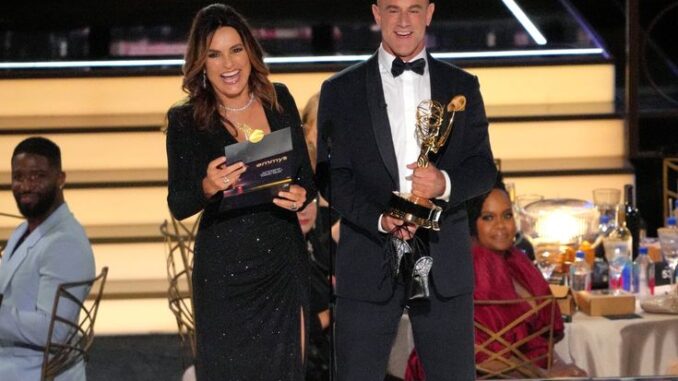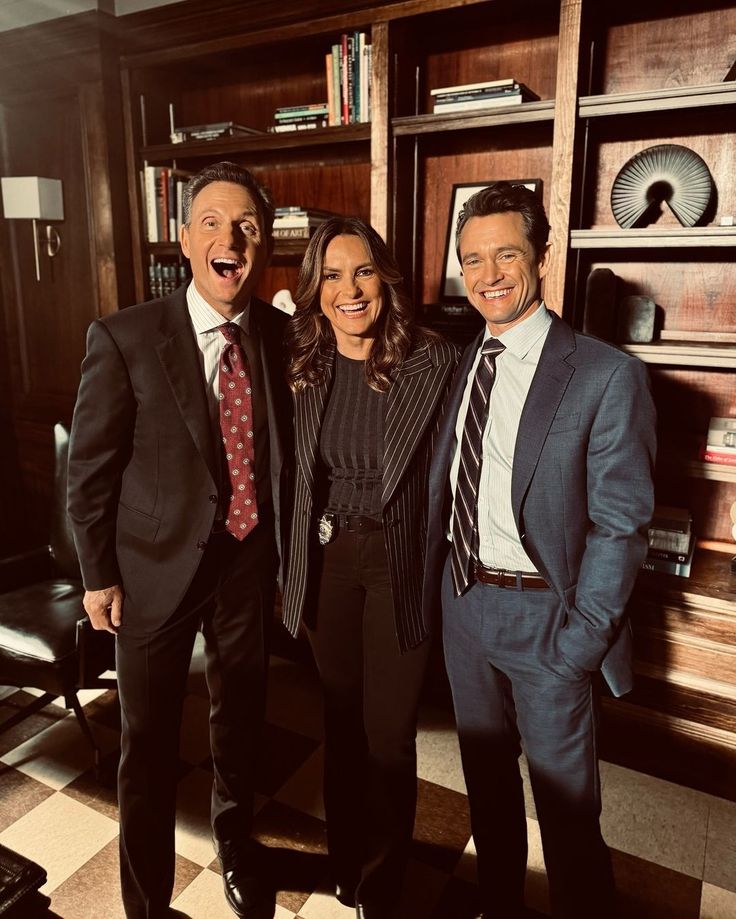
If you’re a long-time Law & Order: SVU fan, chances are you’ve had mixed feelings about Amanda Rollins. Played by Kelli Giddish, Rollins brought a raw vulnerability to the NYPD squad—but her character arc often felt stuck in a loop. Relationships with toxic men? Check. Risky personal decisions that affected her job? Double check. For seasons, fans watched in frustration as Rollins repeated the same mistakes without real growth.
Well, the wait is over. SVU finally broke the cycle, and they did it with surprising finesse. Let’s dive into how the writers finally addressed—and corrected—Rollins’ most problematic trend.

💣 What Was The Problem With Amanda Rollins?
The Repetitive Dysfunctional Relationships
One of Rollins’ most criticized storylines was her constant entanglement in unhealthy romantic relationships. From her gambling-addicted sister to her emotionally abusive ex, it seemed like Amanda couldn’t catch a break—or make a good choice.
Portraying Vulnerability Without Growth
Yes, she was vulnerable. Yes, she was complex. But for many seasons, Rollins’ struggles didn’t evolve. She was stuck in a narrative of being broken without the reward of a redemptive arc. It wasn’t just exhausting for her—it was exhausting for viewers.
🔁The Writers’ Pattern That Fans Noticed
Trauma Becomes a Plot Device
Rollins was often used as a vessel to explore dark themes. While this added realism, it also reduced her to a trauma magnet, rather than a fully developed character with strengths, goals, and growth.
Lack of Empowerment in Her Choices
Despite being a detective, Rollins frequently lacked agency in her personal storylines. She rarely made empowered choices, instead falling into crisis after crisis.
🧠 Why It Was a Problem for the Show
Character Stagnation Hurts Viewer Engagement
Let’s face it—fans want progression. Watching a character go in circles season after season is frustrating. Rollins became predictable in a way that no main character should be.
It Sent Mixed Messages About Strength
SVU has always celebrated strength, resilience, and justice. Rollins, while a capable detective, was often portrayed in ways that conflicted with the show’s core themes.
🔄 So, What Changed in SVU?
The Shift Towards Emotional Maturity
In her later seasons, we saw Amanda starting to make better emotional decisions. She sought therapy, opened up in healthier ways, and began choosing stability over chaos.
Introducing the Carisi Relationship Arc
Yes, fans were skeptical at first. But Rollins and Carisi turned out to be a turning point. Their relationship was grounded, respectful, and—imagine this—functional. It helped rewrite Amanda’s emotional narrative.
❤️ Rollins Finally Got the Happy Ending She Deserved

From Victim to Victor
By choosing to step away from the NYPD for a healthier life, Amanda took control of her future. No longer reactive, she was proactive. This move finally gave her agency.
A Career Pivot That Made Sense
Her decision to transition into teaching wasn’t just a plot twist—it was a symbol. Amanda was no longer surviving; she was thriving. It marked the first time her storyline ended with hope, not heartbreak.
🧭 SVU’s Smart Writing Behind the Scenes
Listening to Audience Feedback
Let’s be honest—Twitter has been screaming about Rollins’ poor treatment for years. It seems the writers finally took that feedback to heart.
Giving Women More Than Just Pain
SVU has long been a champion of survivors. Letting Rollins evolve beyond her trauma was a powerful message that growth is possible, even after the darkest times.
🔍 Breaking Down the Final Episode With Rollins
Closure Without Tragedy
Most SVU exits are either abrupt or tragic. But Rollins? She got closure. Her departure felt earned, not forced. That alone deserves applause.
A Lesson in Character Redemption
Her final moments on the show showed a confident, emotionally grounded woman who had finally figured herself out. It was subtle, but deeply satisfying.
🎭 Kelli Giddish’s Performance Deserves Credit
She Carried Emotional Weight with Grace
Giddish brought complexity to Rollins that few could. Even when the writing faltered, her performance was consistently compelling.
Her Evolution Felt Real, Not Rushed
From a mess of contradictions to a woman of quiet strength, Giddish made us believe in Amanda’s journey.
🧬 The Larger Impact on SVU’s Future
A Template for Character Growth
Rollins’ arc can serve as a blueprint for future characters. You can show struggle, but it needs to lead somewhere.
A Renewed Sense of Balance
Her exit balanced the show’s emotional tone. It reminded fans that while SVU deals with darkness, it can also offer light.
💡 Lessons Other Shows Can Learn from SVU

Let Characters Grow
One key takeaway? Don’t trap characters in trauma loops. Give them space to heal and evolve.
Relationships Should Elevate, Not Sabotage
Amanda and Carisi’s romance proved that healthy relationships are still interesting to watch. Other shows, take notes.
🧱Building Realism Without Losing Heart
SVU Balanced Pain with Progress
Yes, SVU is gritty. But that doesn’t mean characters have to stay broken. Amanda’s ending was a masterclass in balance.
📺 Fan Reactions Say It All
A Wave of Relief and Gratitude
Across social media, the verdict is clear: fans loved Rollins’ ending. It wasn’t just satisfying—it was healing.
“Finally!” Was the Universal Response
Sometimes, closure doesn’t need to be flashy. It just needs to feel right.
📝 Conclusion: A Flawed Arc, Finally Fulfilled
Amanda Rollins was never a perfect character—and that’s exactly why fans cared so deeply. She was messy, human, and relatable. But for too long, she was written into corners she couldn’t escape. Thankfully, Law & Order: SVU took a step back, reassessed, and finally gave her the resolution she deserved.
Her evolution wasn’t just about fixing one character—it was about respecting the intelligence of the audience. With this rewrite, SVU didn’t just repair Rollins’ legacy—they elevated it.
